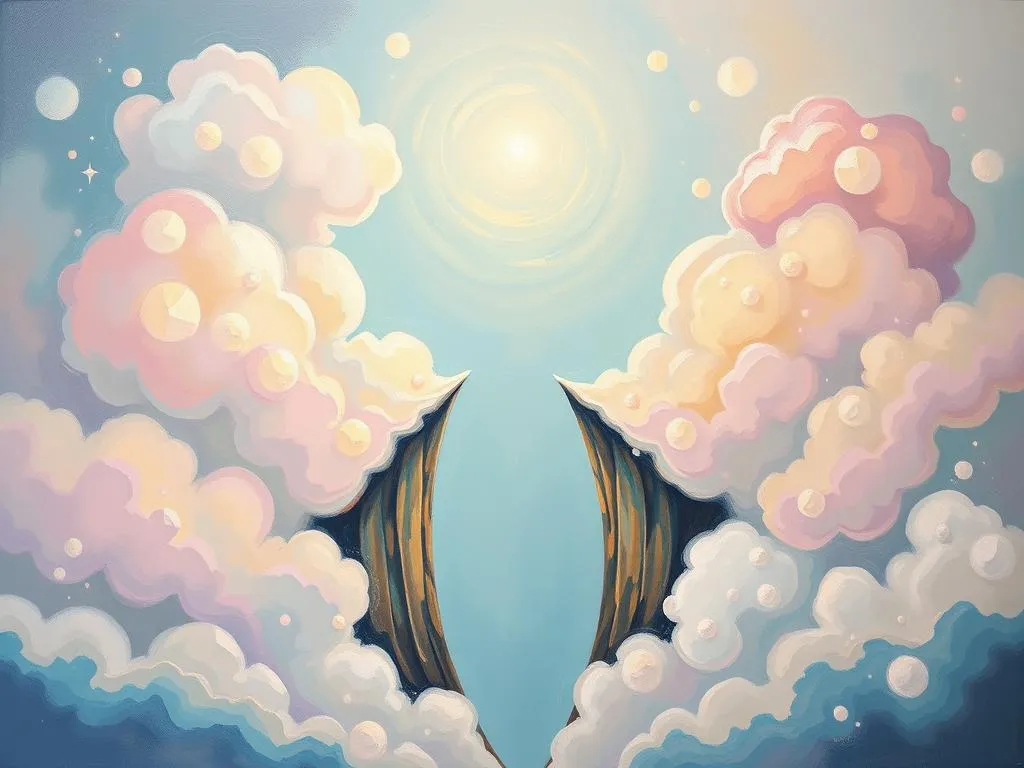
Dreams have long fascinated humanity, acting as windows into our subconscious thoughts, emotions, and experiences. They can evoke feelings of joy, fear, confusion, or even revelation. While many dreamers often know the themes and symbols that resurface in their dreams, a common issue arises: the symbol gap. This is the dissonance between what a symbol appears to represent and its deeper, often more personal significance. Just as a favorite song can evoke different memories for each listener, the symbols in our dreams can have varied meanings depending on our unique life experiences.
Understanding this symbol gap can lead to profound insights. Have you ever found yourself dreaming of a snake and waking up in a cold sweat, unsure of what it meant? Or perhaps you’ve dreamt of flying and felt liberated, yet uncertain about its implications. In this article, we will delve into the intricate world of dream symbols, explore real-life scenarios, and uncover how you can harness these insights for personal growth.
Bridging the Gap: Decoding Dream Symbols
Dream symbols are not one-size-fits-all; they are deeply personal and often subject to cultural interpretations. For instance, snakes might symbolize danger or transformation, depending on the context. In many cultures, snakes represent healing and renewal, as seen in the medical symbol of the caduceus featuring a snake coiled around a staff. Yet, if you have a fear of snakes, your dream encounter might evoke feelings of anxiety rather than empowerment.
Similarly, water can symbolize emotions and the unconscious. In Jungian psychology, water often represents the depths of our feelings, with calm waters signifying peace and turbulent waves indicating emotional turmoil. However, your personal experiences with water—be it a childhood memory of swimming in a lake or a traumatic experience during a flood—can drastically alter how you perceive these dreams.
Another powerful symbol is flight. The ability to soar through the skies can evoke feelings of freedom and liberation, often reflecting a desire for escape from the confines of daily life. Yet, if you dream of falling while flying, this could indicate a fear of losing control or the weight of unfulfilled ambitions.
When interpreting dream symbols, consider the context and your emotional response. Colors can also play a significant role. For example, dreaming of a red rose may symbolize love and passion, while a wilted rose can signify lost love or regret. By paying attention to such details, you can bridge the gap between surface meanings and uncover the depth of your dreams.
Dreamscapes: Stories from the Night
Let’s explore a few scenarios that illustrate how dream symbols can vary widely in meaning.
1. The Relentless Chase
Imagine a dream where you are being chased through a dark, winding alley. Your heart races as you feel the presence of something—or someone—behind you. This classic chase dream often signifies feelings of stress or anxiety in waking life. Perhaps you’re running from responsibilities or facing an overwhelming situation that you feel ill-equipped to handle. The shadowy figure symbolizes the fears you are avoiding.
2. The Towering Waves
In another dream, you find yourself standing on a beach as massive waves rise before you. Instead of fleeing, you feel a sense of awe and acceptance. This dream may represent your emotional landscape; perhaps you’re confronting feelings that you’ve previously avoided. The towering waves symbolize the intensity of your emotions, while your acceptance indicates growth and readiness to face those feelings head-on.
3. The Lost Child
Picture this: You dream of searching for a lost child in an expansive, unfamiliar city. As you wander through crowded streets, the child remains elusive. This dream often reflects feelings of insecurity or the fear of losing an essential part of yourself. The child may symbolize your inner innocence or creativity, reminding you to reconnect with your true self amidst life’s chaos.
4. The Classroom of Life
You find yourself sitting in a classroom, surrounded by familiar faces, yet you can’t remember why you’re there. The teacher begins to call on you, but you feel unprepared. This dream scenario can point to feelings of inadequacy or a fear of judgment. It reflects your internal struggle with self-worth and the pressures of performance, whether at work or in personal relationships.
5. The Repeating Task
In yet another dream, you repeatedly try to complete a simple task—like packing a suitcase—but each time, you find that you’re missing vital items. This scenario may indicate a sense of frustration in your waking life. Perhaps you feel unprepared for an upcoming change or transition, symbolized by the suitcase. The dream may be urging you to assess your readiness and confront any underlying fears.
Bridging the Gap: Steps Toward Personal Growth
Now that we’ve explored the various meanings behind dream symbols, how can you use this knowledge for personal growth? Bridging the symbol gap requires introspection and a willingness to embrace your dreams as valuable messages from your psyche. Here are some practical steps to get started:
1. Keep a Dream Journal: Write down your dreams as soon as you wake up. Note not only the symbols but also your emotions and the context of the dream. This practice will help you identify recurring symbols and patterns over time.
2. Reflect on Personal Experiences: Consider how your life experiences shape your interpretations. When a certain symbol appears in your dream, ask yourself: What does this mean to me? Reflect on the emotions that arise and how they relate to your current life situation.
3. Explore Cultural Meanings: Research different cultural perspectives on dream symbols. Understanding how symbols are interpreted across cultures can provide additional layers of meaning. This exploration can also help bridge the gap between your personal interpretations and broader societal perceptions.
4. Meditate on Symbols: Take time to meditate on specific symbols that resonate with you. Visualize the symbol and observe the feelings it evokes. Allow your intuition to guide you in connecting these symbols to your waking life.
5. Seek Guidance: If you’re struggling to understand a recurring dream or symbol, consider discussing it with a trusted friend or therapist. Sometimes, an outside perspective can shed light on what you might be missing.
As you bridge the gap between surface meanings and deeper significance, remember that dreams are not merely a puzzle to solve; they are a reflection of your innermost self. Embrace the journey of self-discovery and allow your dreams to guide you.
In closing, let’s reflect on the power of dreams and the importance of understanding their symbols. Every dream is an invitation to explore the depths of your consciousness. By bridging the gap between symbols and personal experiences, you empower yourself to unlock profound insights, fostering personal growth and emotional healing. Whether you find yourself soaring through the skies or navigating the depths of your fears, remember that each dream is a step toward greater self-awareness and a richer understanding of your life’s journey.







